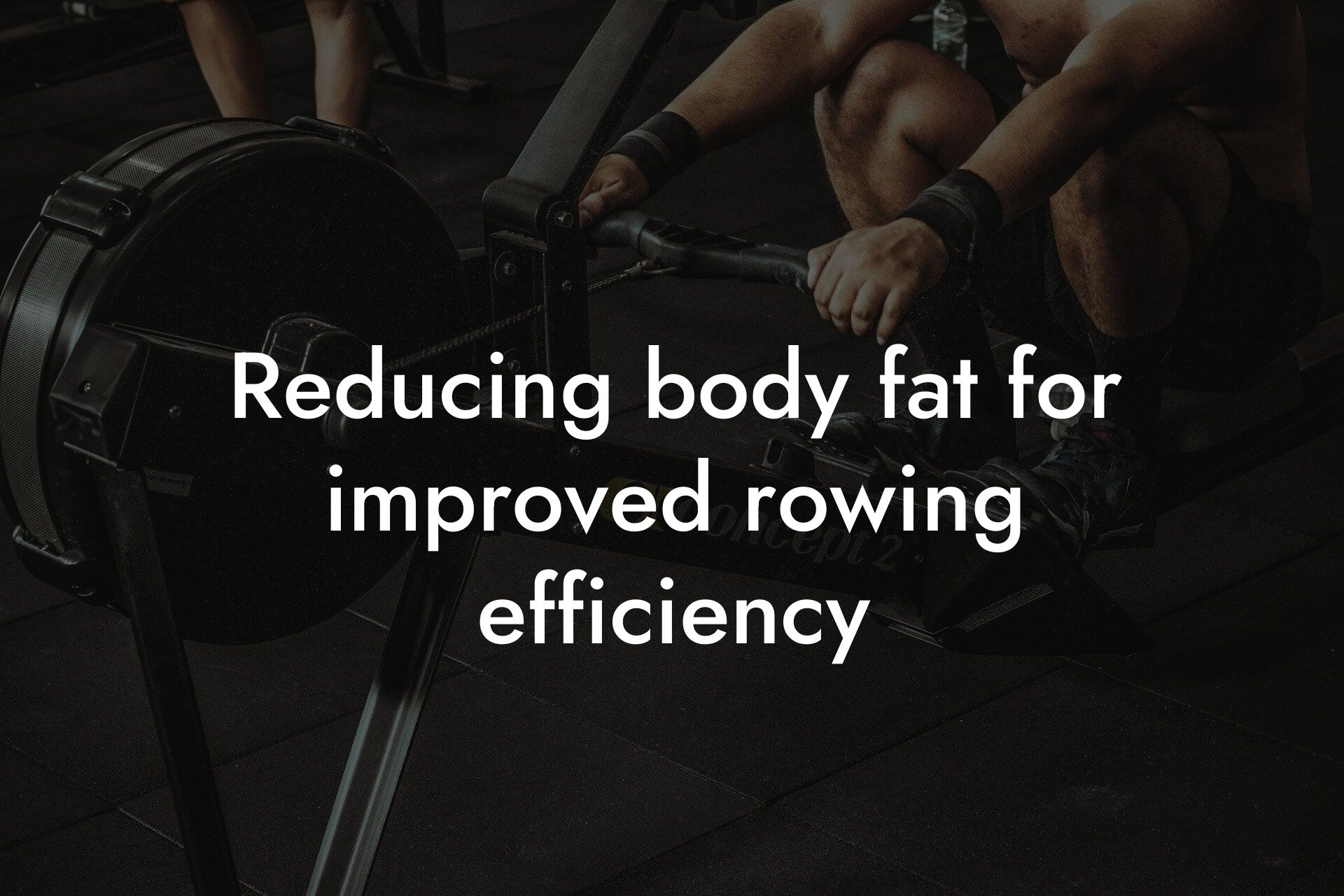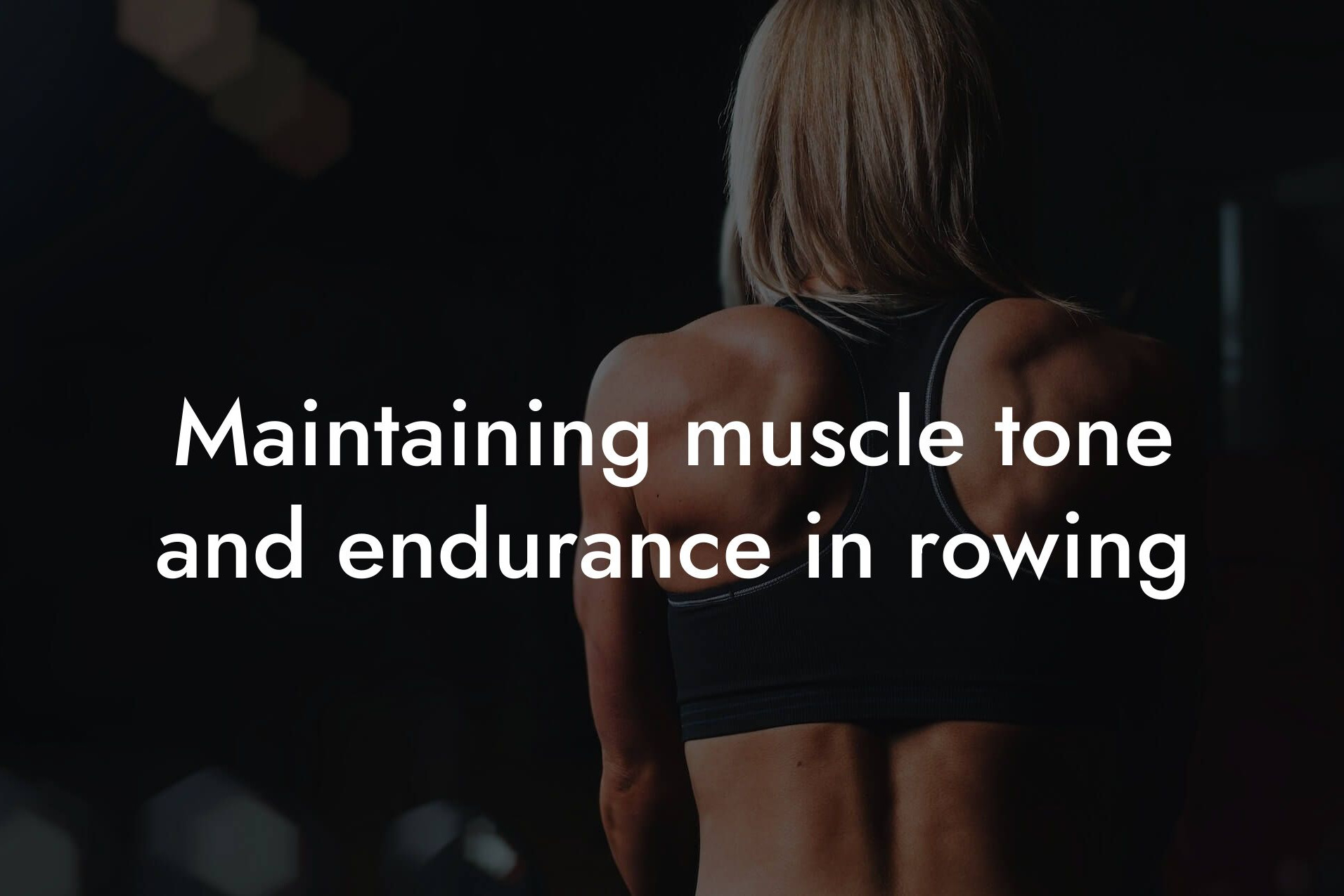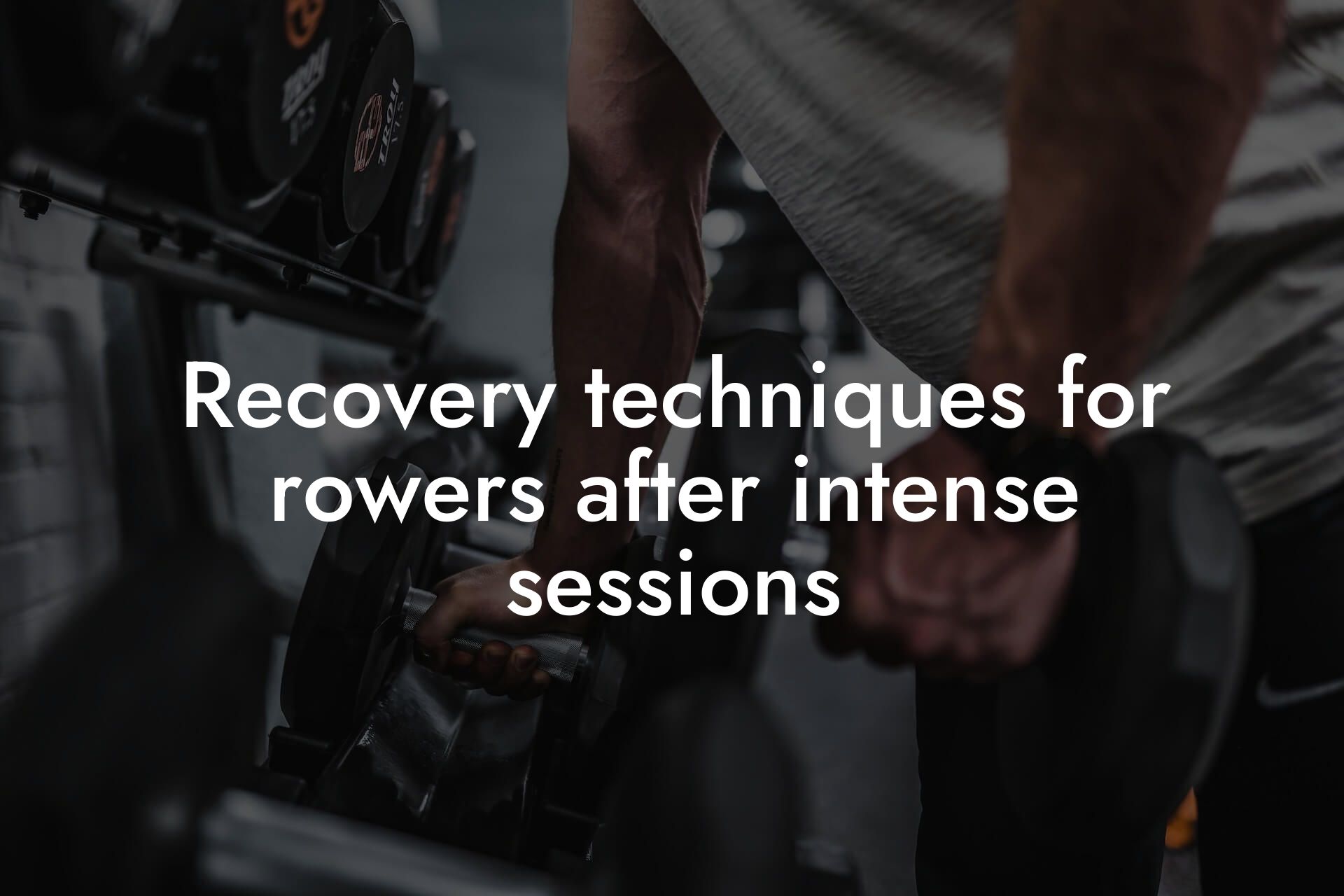Introduction to Rowing and Its Demands
Rowing is a physically demanding sport that requires a unique blend of strength, endurance, and technique. As a high-earning professional, you understand the importance of maintaining a strong physical appearance, low body fat, and optimal physique. Rowing can be an excellent way to achieve these goals, but it's crucial to balance strength and endurance to maximize performance and minimize the risk of injury. In this article, we'll delve into the importance of balancing strength and endurance in rowing, and provide you with a comprehensive guide to help you achieve your goals.
Table of Contents
- Introduction to Rowing and Its Demands
- The Importance of Strength in Rowing
- The Importance of Endurance in Rowing
- The Consequences of Imbalance
- Assessing Your Current Strength and Endurance
- Training Strategies for Balancing Strength and Endurance
- Nutrition and Recovery Strategies
- Monitoring Progress and Adjusting Your Training Program
- Frequently Asked Questions
The Importance of Strength in Rowing
Strength is a critical component of rowing, as it enables you to generate power and speed. Having strong muscles, particularly in your legs, core, and upper body, is essential for propelling the boat through the water. A strong rower can maintain a high intensity over a longer period, which is crucial for achieving success in the sport. Strength also helps to improve your technique, as you'll be able to maintain a more efficient posture and generate more power with each stroke.
The Importance of Endurance in Rowing
Endurance is equally important in rowing, as it allows you to sustain a high intensity over a prolonged period. Rowing is a cardiovascular-intensive sport that requires a strong aerobic base, which enables you to recover quickly between strokes and maintain a consistent pace. Endurance also helps to improve your lactate threshold, which is the point at which your body starts to accumulate lactic acid and fatigue sets in. A high level of endurance enables you to push through this threshold and maintain a high intensity for longer.
The Consequences of Imbalance
If you focus too much on strength and neglect endurance, you may experience a decline in performance and an increased risk of injury. Overdeveloped muscles can lead to poor technique, which can put unnecessary strain on your joints and muscles. On the other hand, if you focus too much on endurance and neglect strength, you may struggle to generate power and speed. A balanced approach is essential to achieve optimal performance and minimize the risk of injury.
Assessing Your Current Strength and Endurance
To balance your strength and endurance, it's essential to assess your current levels. You can do this by conducting a series of tests, such as:
- Maximal oxygen uptake (VO2 max) test: This test measures your aerobic capacity and endurance.
- Wingate test: This test measures your anaerobic capacity and power output.
- Strength tests: These tests measure your muscular strength, such as your 1-rep max in exercises like squats, deadlifts, and bench press.
These tests will provide you with a baseline measurement of your strength and endurance, which you can use to develop a training program that addresses any imbalances.
Training Strategies for Balancing Strength and Endurance
To balance your strength and endurance, you'll need to incorporate a combination of training strategies into your program. These may include:
- Periodized training: This involves alternating between periods of high-intensity strength training and low-intensity endurance training.
- Concurrent training: This involves combining strength and endurance training in the same session, such as performing strength exercises followed by endurance exercises.
- High-intensity interval training (HIIT): This involves short bursts of high-intensity exercise followed by periods of rest or low-intensity exercise.
- Strength training with a focus on power: This involves using exercises like box jumps and depth jumps to improve your power output.
It's essential to work with a qualified coach or trainer to develop a training program that addresses your specific needs and goals.
Nutrition and Recovery Strategies
Nutrition and recovery play critical roles in balancing your strength and endurance. A well-balanced diet that includes plenty of protein, complex carbohydrates, and healthy fats will help to support muscle growth and repair. Additionally, adequate rest and recovery are essential for allowing your muscles to adapt to the demands of rowing. This may include:
- Getting 7-9 hours of sleep per night
- Incorporating rest days into your training program
- Using techniques like foam rolling and stretching to aid in recovery
By prioritizing nutrition and recovery, you'll be able to optimize your performance and reduce the risk of injury.
Monitoring Progress and Adjusting Your Training Program
Regularly monitoring your progress is essential for ensuring that your training program is effective. This may involve:
- Tracking your performance metrics, such as your 2,000-meter rowing time or your maximum wattage output
- Conducting regular fitness tests, such as VO2 max or Wingate tests
- Working with a coach or trainer to adjust your training program based on your progress
By regularly monitoring your progress and adjusting your training program, you'll be able to optimize your performance and achieve your goals.
Balancing strength and endurance is critical for achieving success in rowing. By understanding the importance of both components, assessing your current levels, and incorporating a combination of training strategies into your program, you'll be able to optimize your performance and minimize the risk of injury. Remember to prioritize nutrition and recovery, and regularly monitor your progress to ensure that your training program is effective. With dedication and hard work, you can achieve your goals and take your rowing performance to the next level.
Frequently Asked Questions
What is the importance of balancing strength and endurance in rowing?
Balancing strength and endurance in rowing is crucial because it allows rowers to maintain a high power output over a prolonged period. Strength is necessary for generating force and speed, while endurance is essential for sustaining that effort over time. A well-balanced combination of both enables rowers to perform at their best and achieve their goals.
How does strength training benefit rowers?
Strength training is essential for rowers as it helps improve their power output, speed, and overall performance. It targets specific muscle groups, such as the legs, core, and upper body, which are critical for generating force and propulsion in the water. Stronger muscles also reduce the risk of injury and improve overall efficiency.
What are the key muscle groups used in rowing?
The primary muscle groups used in rowing are the legs, core, and upper body. The legs provide the power and drive, while the core stabilizes the body and transfers force from the legs to the upper body. The upper body, including the arms, shoulders, and back, helps to propel the boat forward.
How does endurance training benefit rowers?
Endurance training is vital for rowers as it enables them to sustain a high intensity effort over a prolonged period. It improves cardiovascular fitness, increases lactate threshold, and enhances the body's ability to utilize oxygen and energy stores. This allows rowers to maintain a high power output and delay fatigue.
What are some effective endurance training methods for rowers?
Effective endurance training methods for rowers include steady-state rowing, interval training, and high-intensity interval training (HIIT). These methods help improve cardiovascular fitness, increase lactate threshold, and enhance the body's ability to utilize oxygen and energy stores.
How can rowers incorporate strength training into their routine?
Rowers can incorporate strength training into their routine by setting aside 2-3 times per week for strength-focused workouts. This can include exercises such as squats, lunges, deadlifts, and bench press, as well as specific rowing exercises like the rowing machine or ergometer.
What are some common mistakes rowers make when it comes to strength training?
Common mistakes rowers make when it comes to strength training include neglecting proper form and technique, not incorporating exercises that target the core and upper body, and not varying their strength training routine to avoid plateaus.
How can rowers balance their strength and endurance training?
Rowers can balance their strength and endurance training by setting specific goals and priorities, creating a structured training plan, and incorporating a mix of strength and endurance-focused workouts into their routine. It's also essential to listen to their body and adjust their training accordingly.
What is the ideal strength-to-endurance ratio for rowers?
The ideal strength-to-endurance ratio for rowers varies depending on the individual and their specific goals. However, a general rule of thumb is to allocate 20-30% of training time to strength training and 70-80% to endurance training.
How can rowers measure their strength and endurance progress?
Rowers can measure their strength and endurance progress by tracking their performance metrics, such as power output, speed, and heart rate. They can also use tools like ergometer tests, fitness assessments, and body composition analysis to monitor their progress.
What role does nutrition play in balancing strength and endurance in rowing?
Nutrition plays a critical role in balancing strength and endurance in rowing. A well-balanced diet that includes adequate protein, complex carbohydrates, and healthy fats helps to support muscle growth and repair, as well as provide energy for endurance efforts.
How can rowers optimize their nutrition for strength and endurance gains?
Rowers can optimize their nutrition for strength and endurance gains by fueling their bodies with a balanced diet, staying hydrated, and timing their nutrition to coincide with their training. They should also focus on consuming anti-inflammatory foods and supplements to aid in recovery.
What are some common nutrition mistakes rowers make?
Common nutrition mistakes rowers make include neglecting to fuel their bodies adequately, consuming high amounts of processed foods and sugar, and not staying hydrated. These mistakes can lead to decreased performance, fatigue, and increased risk of injury.
How can rowers incorporate recovery techniques into their routine?
Rowers can incorporate recovery techniques into their routine by prioritizing rest and relaxation, using tools like foam rolling and stretching, and incorporating activities like yoga and meditation to reduce stress and improve flexibility.
What are some effective recovery techniques for rowers?
Effective recovery techniques for rowers include active recovery, such as light rowing or cycling, as well as passive recovery, such as stretching and foam rolling. They can also use tools like compression garments, ice baths, and massage to aid in recovery.
How can rowers avoid overtraining and burnout?
Rowers can avoid overtraining and burnout by listening to their bodies, prioritizing rest and recovery, and incorporating variety into their training routine. They should also set realistic goals and priorities, and avoid pushing themselves too hard.
What are some common signs of overtraining and burnout?
Common signs of overtraining and burnout include fatigue, decreased performance, increased risk of injury, and mental and emotional exhaustion. Rowers should be aware of these signs and take proactive steps to avoid them.
How can rowers incorporate mental training into their routine?
Rowers can incorporate mental training into their routine by practicing visualization techniques, setting positive affirmations, and developing a growth mindset. They can also work with a sports psychologist or coach to develop mental training strategies.
What are some effective mental training techniques for rowers?
Effective mental training techniques for rowers include visualization, positive self-talk, and mindfulness meditation. These techniques can help rowers develop a strong mental game, overcome obstacles, and perform at their best under pressure.
How can rowers balance their rowing goals with other aspects of their life?
Rowers can balance their rowing goals with other aspects of their life by setting priorities, creating a structured schedule, and communicating with their support network. They should also be flexible and adapt to changes and challenges as they arise.
What are some common challenges rowers face in balancing their goals?
Common challenges rowers face in balancing their goals include time management, conflicting priorities, and pressure from coaches, teammates, and themselves. They should be aware of these challenges and develop strategies to overcome them.
Here are some related articles you might love...
- Reducing body fat for improved rowing efficiency
- Maintaining muscle tone and endurance in rowing
- Recovery techniques for rowers after intense sessions
- How body composition impacts rowing performance
- The role of rowing in cardiovascular health
- Strength training tips to complement your rowing routine
- Using DEXA scans to monitor progress in rowing
- Bone density and its role in rowing performance
- Nutrition strategies for sustained energy during rowing workouts
Zak Faulkner
Zak Faulkner is a leading authority in the realm of physical health and body composition analysis, with over 15 years of experience helping professionals optimise their fitness and well-being. As one the experts behind Tano Performance Group, Zak has dedicated his career to providing in-depth, science-backed insights that empower clients to elevate their physical performance and overall health.
With extensive knowledge of DEXA technology, Zak specializes in delivering comprehensive body assessments that offer precise data on body fat, muscle mass, bone density, and overall physique. His expertise enables individuals to make informed decisions and achieve their fitness goals with accuracy and confidence. Zak’s approach is rooted in a deep understanding of human physiology, combined with a passion for helping clients unlock their full potential through personalised strategies.
Over the years, Zak has earned a reputation for his commitment to excellence, precision, and client-focused service. His guidance is trusted by top professionals who demand the best when it comes to their health. Whether advising on fitness programs, nutritional strategies, or long-term wellness plans, Zak Faulkner’s insights are a valuable resource for anyone serious about taking their health and fitness to the next level.
At Tano Performance Group, Zak continues to lead our Content Team revolutionising how professionals approach their physical health, offering unparalleled expertise that drives real results.




